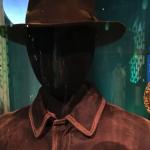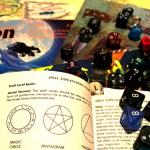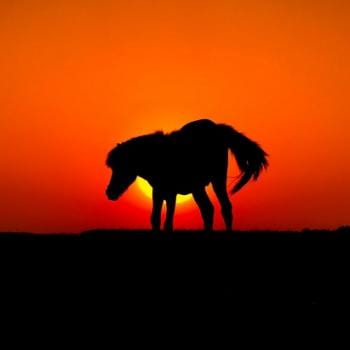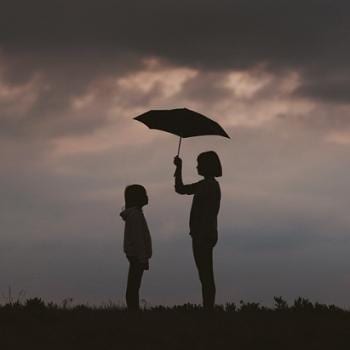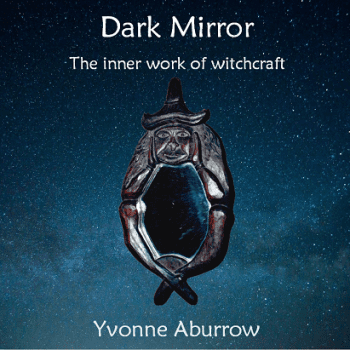[Note from the author: This was originally intended to be my introduction and first post to the blog… but, as you’re probably aware, it was overtaken by events. Nonetheless, it’s still relevant, so I’ve opted to go ahead and post it, albeit with a few changes to reflect its new position in the track order. ♥]
Hello, beautiful creatures. My name1 is Misha, and this is my blog.
Of course, we’re already two posts in, so you probably know that by now. However, since I’m not any sort of Big-Name Pagan (nor even a Medium-Name Pagan), you may be wondering who I am, what this blog is about, and why you should care. Those are all excellent questions. I figure it’s my job to answer the first two questions and, with luck, an answer to the third question will emerge organically. (Hey, one can hope, right?)
The TL;DR version is that I’m a geeky, queer, feminist Faery witch and sorcerer with a degree in gender studies, a sense of humor, and an opinion or three to share.
The longer version is… well, longer.

Who’s this “Misha” person, anyway?
I’m an initiate of the tradition of witchcraft, theurgy, and sorcerous curmudgeonry descended from Victor and Cora Anderson, variously known as Faery or Feri. For more information, allow me to point you towards Niklas Gander’s excellent essay “So, just what is the Feri Tradition?” I’m also an initiate of two lines of British traditional Wicca, as well as a reckless dabbler2 in grimoiric magic. I have a passion for religious and magical history, ecstatic ritual, tool-making, and music as a magical practice, among many other things.
I was born in central California in the early Seventies and spent the Eighties in upstate South Carolina, where I first discovered both modern Paganism and my own queerness. (You may reliably expect posts on all of those subjects, separately and together, in the days to come.) I’ve since transplanted myself quite happily to the Pacific Northwest, where I live with my polymath superhero wife and my precocious daughter in a funky box of a house filled with multiple computers, a stack of wooden martial arts weapons, several tons of books, and far more coffee-brewing equipment than anyone really needs. When I’m not being all witchy and stuff, I’m probably cuddling with my sweetie and my kid, teaching university students how to appease the gods of Academia, lugging around really thick novels, or doing housework to avoid arguing with people on the Internet. At any given point, I’m probably listening to progressive rock, ’80s synthpop, thumpy electronic dance music, or the really scary kind of heavy metal.
As mentioned previously, I embrace the label “queer” as an umbrella term to encapsulate my gender and sexual identities: non-binary, genderqueer, bisexual/pansexual, and so on. While I wouldn’t normally front-load references to my gender or sexuality, I’m making an exception here, because my queerness informs my perspectives and approaches to the subjects with which I’ll be engaging in the days to come. (And yes, I acknowledge that “queer” is a contentious term. I’ll give my reasons for using it a few paragraphs down.)
In related news, I have the privilege of holding a bachelor’s degree in Gender, Women, and Sexuality Studies from the University of Washington. This also informs my perspective and approach, as you’ll see below.
So, that’s me sorted. Now, about this blog… (Warning! Academic gender theory ahead!)
What’s this all about, then?
“Outside the Charmed Circle” derives its name from the work of Gayle S. Rubin, an anthropologist and theorist on sexuality and gender. In her essay “Thinking Sex: Notes for a Radical Theory of the Politics of Sexuality,” Rubin coins the term “the charmed circle” to refer to those sexual desires, practices, and orientations which fit comfortably within society’s approval: heterosexuality, monogamy, “vanilla” sex, and so on. In her schema, each of these was paired with its less-acceptable counterpart(s)—homosexuality, polyamory, kink, etc.—which fell outside the charmed circle, into what she termed “the outer limits.” These desires, practices, and orientations are sometimes termed “queer” both by detractors and, as an act of sociopolitical reclaiming, by proponents and practitioners themselves. This isn’t a universal terminology, of course. Many in the LGBT+ community explicitly shun the term “queer” as a noun or a verb, viewing it as an unreclaimable slur. Many others, however, have embraced queerness as an identity, seeing in the term an irreducible “otherness” which captures the social and political realities of life outside the charmed circle. (Your humble narrator falls into this latter camp, as you may have noticed.)
This model of sexual propriety and approval can be extended to analyze gender as well, as seen in the dichotomies of cisgender/transgender, gender-conforming/gender-nonconforming, binary/nonbinary, and so on. Gender identities outside the charmed circle have “queered” gender in much the same way that non-normative sexual identities have queered sexuality; indeed, there’s a significant overlap between gender-based queerness and sexuality-based queerness.
I suggest that the modern Pagan, polytheist, and occult movements are outside the charmed circle of culturally normative religious and spiritual identities, occupying an outsider status unavoidably similar to queer sexual and gender identities. What I suggest, in other words, is that magic, witchcraft, Paganism, and polytheism are queer: that we queer religion and spirituality in many of the ways that identities of Rubin’s “outer limits” queer sexuality and gender. Moreover, these forms of spirituality outside the charmed circle have incorporated and embraced queerness, both of sexuality and gender, as far back as we care to research. One can see this queer, magical sexuality in Doreen Valiente’s beloved “Charge of the Goddess,” with its radical declaration that “all acts of love and pleasure are my rituals,” or in the osculum infame of inquisitorial fantasies. One can see the interplay of gender and the numinous in the genderqueer upbringing of Dionysus, the cross-dressing adventures of Thor and Loki, and the ambiguous genders of Ymir, Pales, and Hermaphroditus. Nonetheless, many modern expressions of magical and polytheist spirituality have reified and valorized the hegemonic, mostly Western, mostly Christian norms of gender and sexuality at the expense of all other expressions of gender and sexuality. In so doing, we have cut themselves off from a broad swath of the organic, lived experiences of human existence, both corporeally and spiritually. By acknowledging and engaging with our own “outside” selves—in particular, the full spectrum of gender and sexuality—we can reclaim not only our own lost power, but a fuller experience of the numinous and liminal.
So, where are you going with this?
In the days to come, I plan to say more about that. I’ll write about the intersections of gender and sexuality with modern (and postmodern) magical and spiritual practice, and the ways in which all of these are expressions of otherness, of outsider culture. We’ll look at about ancient traditions, modern reconstructions, postmodern innovations, and what the future could look like for all of us weirdos outside the charmed circle. I’ll be writing about the mysticism of geek culture, the unavoidable political nature of magic, growing up quasi-Catholic in California and discovering Paganism in the deep South, gender in witchcraft as both bondage and liberation, my ongoing bad romance with woo-woo books, and—no kidding—the occult dangers of role-playing games.
And a whole lot more.
If none of that particularly interests you, I won’t be hurt… but if it does interest you, feel free to hang around! The coffee’s fresh, and so is the snark.
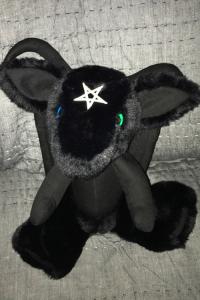
You can find me online at Facebook, Twitter, Tumblr, and Instagram, all of which are excellent places to catch up on my favorite adorable occult memes and spooky cat videos (and vice versa). You can also find me corporeally in and around the Pacific Northwest generally (and the Seattle area specifically), and occasionally at Pagan, polytheist, and magical conferences all over the place. If you spot me—odds are, I’ll be wearing a cutesy, occult-themed t-shirt—come say hi! I’m quite friendly, if socially awkward at times. (The word “adorkable” may have been used once or twice.)
In any event, thanks for reading. Cheers!
___
- For a given value of “name,” anyway. I mean, it’s not my legal name, but it’s not not my legal name, either. As the kids say, it’s complicated.
- This is a joke. I make those sometimes. I’ll try not to let it get out of hand, and to explain them when I get too obscure (because jokes are funniest when you have to explain them!).

